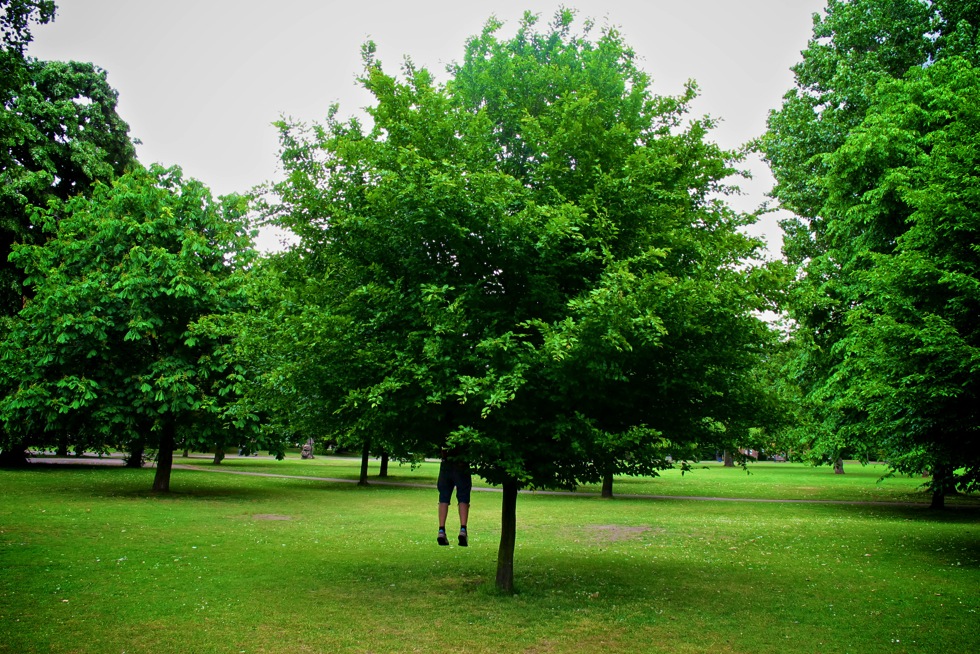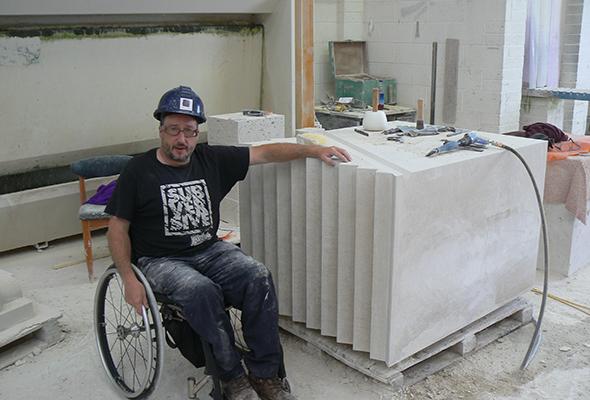“I Always Avoided Referring To Disability In My Work, Because I Was Afraid To Seem Pitiful”: The Transformation Of DaDaFest

DaDaFest returns this week: bigger, better and with a confident shift in attitude. Jade French speaks to the director, curator and artists involved about what their work has to say about disability in its fullest sense…
It’s a big year for DaDaFest. The festival’s 12th edition is also its 30th birthday; and it has evidently been a time for the team to consider the milestone and think about it’s future. The launch of the brand new Thinking and Ideas strand to the organisation has taken DaDaFest on a new trajectory: most prominently, and controversially, commissioning more non-disabled artists than ever before. Are we seeing a move away from work by disabled artists, to work more broadly about disability, or broader still, human issues?
The title for this year’s DaDaFest, Art of the Lived Experiment, encapsulates much of the organisation’s shift in attitude: it explores the idea that both art and life are in a continual state of change and uncertainty. A starting point for the practice of alchemy, the main exhibition (opening at the Bluecoat this week) works with magical, transformative and experimental connotations to consider practices employed by contemporary artists. This state of change that underpins the new festival could certainly be reflective of many disabled people’s lives today; but how, if at all, can artists (disabled or not) interpret this concept in a challenging and non-patronising manner?
For Tony Heaton, exhibiting artist and CEO of disability arts organisation Shape, it’s the transformative qualities which have proved useful for the creation of his sculpture Gold Lamé: a gold-sprayed Invacar hanging in the Bluecoat’s Vide space. “The art-making process is, in essence, experimental”, Heaton says. ”I think Gold Lamé responds to that by following a process: the power of an iconic ‘disability’ object, the Invacar, subvert it, invert it, ‘disable’ it, remove the engine, transmute it from Spazz Blue to Gold, play with the word Lame/Lamé – it’s an experimental process”.
For Exhibition Curator Adam Williamson, the Art of the Lived Experiment is, in part, informed by his own experiences of becoming deaf. “When I became deaf, I had to adjust, not so much to the impairment, but to the social perceptions (largely derogatory), that I was faced with. The way I dealt with this was to experiment with my life and with art in ways I wouldn’t have done if I’d remained a hearing person”.
For Ruth Gould, DadaFest’s Artistic Director, the festival’s future relies on a shift of focus, both in concept and action. “This exhibition breaks away from exclusive views of disability arts”, Gould told us, ”in order to capture thinking on human issues and how we interact with — and adapt to — the everyday, the personal and the surreal in a world full of change.”

This ‘break away’ is certainly reflective of current debates within the disability arts field around the inclusion of non-disabled artists into the movement. Williamson seems in agreement. “This isn’t an overtly disability arts exhibition in the sense that I haven’t curated any work that graphically depicts or describes impairment”.
Wiliamson sees the inclusion of more non-disabled artists as a vital change. The festival is hoping that a bold re-envisioning will attract more visitors: “It is difficult to engage a mainstream audience with supposed tragedy or misfortune, unless of course they are invited to feel pity!”
We wonder whether this new outlook could be in order to support artists who might define themselves as disabled, but are uncomfortable with framing their work as such. This was the case for artist Ellen Friss, who is exhibiting the sculptural STELA at this year’s festival: an object and video attempting to translate a live performance. “I have always avoided referring to my disability in my work, because I was afraid to seem pitiful. This is the first time I have asked myself if my outlook might in fact be influenced by my deafness. Perhaps I really do tend to think in images, rather than words?”
That said, not all artists agree. Heaton, who has for the last two decades worked on improving access to the arts for disabled people, believes that the experience of disability is key. “Disability arts is a clearly defined genre. The generally agreed definition of disability arts, the one that the disability arts movement has found most accurately reflects what we are doing, is that it is art made by disabled people which reflects the experience of disability”. This understanding suggests that ultimately, disability arts is about disabled people taking control, by producing artworks that present their own perceptions and their own experiences of disability to the world.
Reflecting on all our conversations, what becomes clear is that the DaDaFest artists all share a commonality with people who experiment with life: adjusting to the world around them, and then sharing those experiences through art. The mix of disabled and non-disabled artists in this exhibition, and more broadly the festival, shows an attempt to capture disability in its fullest sense. For we are not all born ‘disabled’ or ‘non-disabled’; for some, disability is an acquisition, a process and — as poignantly demonstrated — a transformation.
This focus on change is further reflected in the inaugural DaDaFest International Congress on Disability Culture and Human Rights, as shaping social change is one of the defining qualities of the disability arts movement. Summarised brilliantly by disability activists Morrison and Finkelstein, who wrote Culture As Struggle: Access to Power (1992): “Arts practice should also be viewed as much as a tool for change as attending meetings about orange badge provision… Only by ensuring an integrated role for disability arts and culture in the struggle, can we develop the vision to challenge narrow thinking, elitism and dependency on others for our emancipation”.
Jade French
DaDaFest’s Art of the Lived Experiment, exhibition launches at the Bluecoat, Liverpool, Sat 8 November 2014 and continues until 11 January 2015 — open 10am-6pm daily, free entry
Freelance writer? Come along to our special DaDaFest Bloggers’ Reception, Sat 8 November 2014, 3pm, at the Bluecoat, Liverpool — see more info and booking here
See full festival programme here
Follow @dadafest on Twitter for news and updates
Images: Top: The Vacuum Cleaner – Ship of Fools, 2014; image courtesy Sophie Nathan. Centre: Tony Heaton, DaDaFest exhibiting artist and CEO of disability arts organisation Shape





